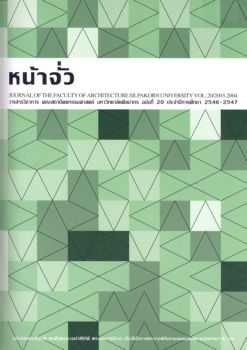Eurocentrism: Do Thai and Australian Housing Developers Have a Case to Answer?
Keywords:
Developer housing, Advertising, Thailand, Australia, Housing estatesAbstract
In many cities throughout the world real estate developers are producing houses with architectural styles that speak of an imported heritage rather than one that might be named specifically local. Furthermore the local construction technologies, plans and forms that constitute a nation's vernacular architectures have been supplemented or replaced by styles that reflect notions of European inspired modernity and practices of industrialisation. Developers argue that they are responding to market forces with products that offer new forms of living and status.
This paper seeks tograpple with this interaction between tradition and modernity, localism and Eurocentrism. In particular it looks at the implications of this phenomena by analysing advertisements for contemporary housing in both Thailand and Australia. Despite their significantly different histories Thailand and Australia have experienced a boom in housing development. Analysis suggests that common themes emerge, primarily the advertiser's (and consumer's) desire to tap into a European architectural heritage.
This paper argues that the trend to replicate European styles is problematic in countries with different cultural and environmental conditions. It leaves many residents stranded between the fragments of their own architectural heritage and a series of new aspirations promoted by housing developers and advertisers. This trend negates the value of the many previous generations of architects, both formally and informally trained, who developed housing to specifically accommodate local needs.




